This lavender simple syrup is great for making coffee, iced tea, cocktails, or a flavoring for cakes. Plus, with my unique chef tips, you get a syrup that isn't bitter, but rather light, floral, and perfect for using all season long.
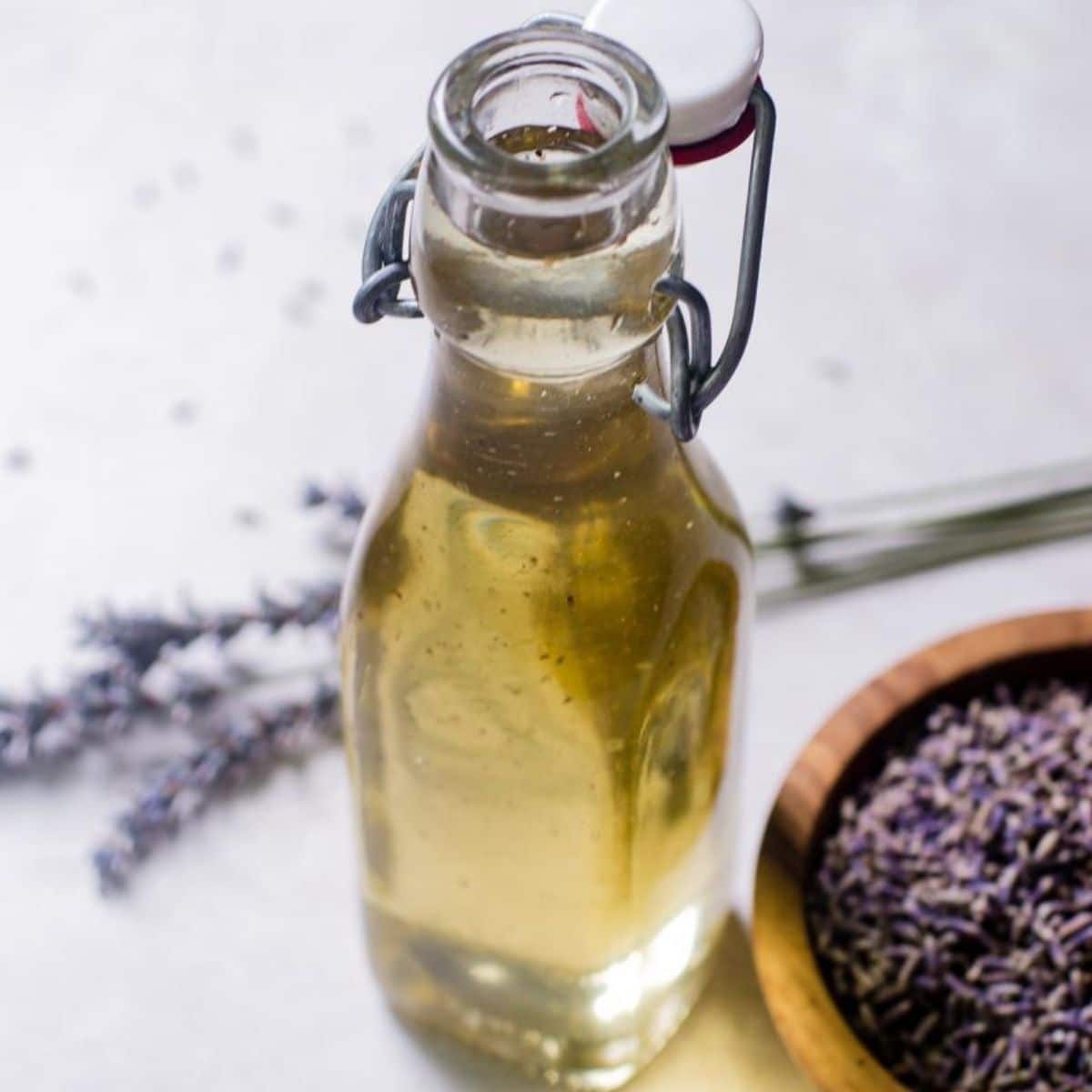
While often thought of as just a flower, lavender is an amazing culinary ingredient. It boasts a flavor profile that is earthy, herbal, and astringent, while also being a bit sweet and delicate.
With a profile like that, turning lavender into a simple syrup is a foundation for all manner of delicious things in summer. Plus, since it uses fewer buds, a large bunch of dried lavender can keep you in syrup for the entire year.
Not sure what to use the lavender syrup for?
It's is a versatile condiment that works for so many things. From drinks like lemonade, cocktails, and lattes. Or even keeping cakes moist.
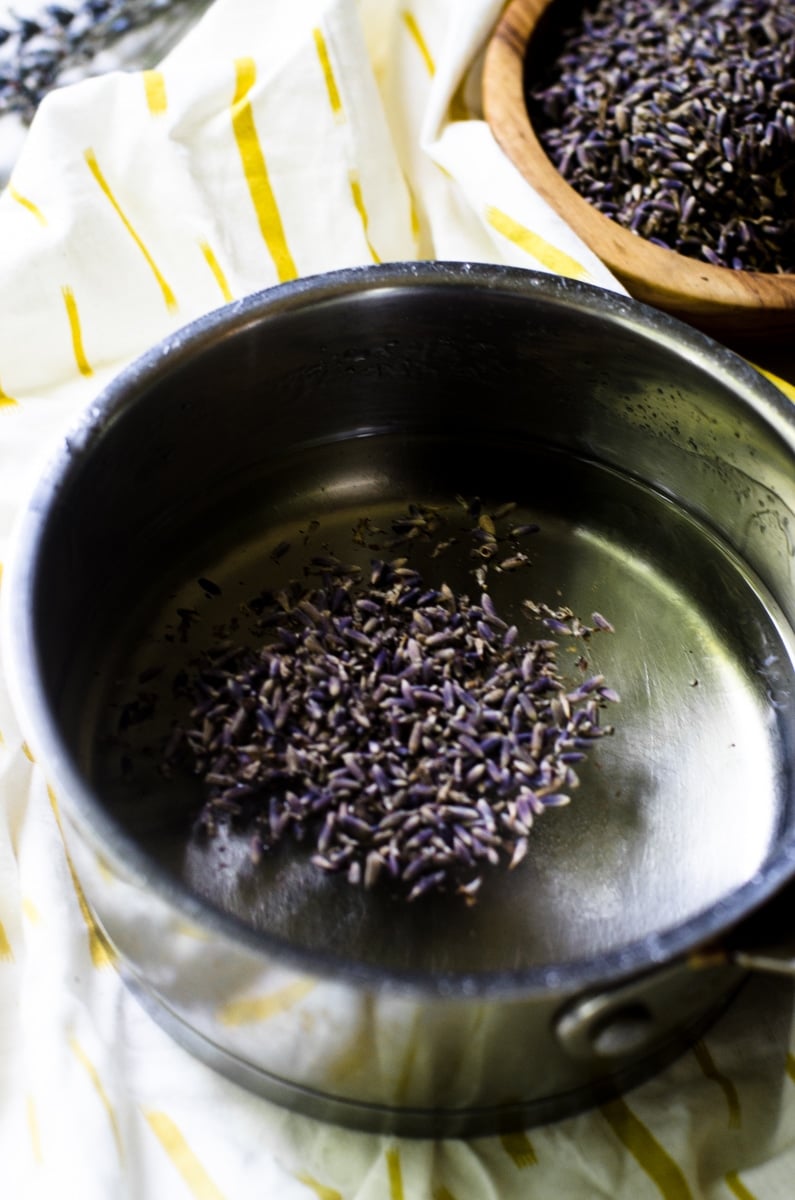
Why This Recipe Works
Lavender simple syrup has just a hint of floral flavor that makes you feel like you walked into a meadow of lavender flowers.
As long as it is made correctly, it is mild, nuanced, and sweet. It doesn't overwhelm the senses like a bottle of essential oil or feel like you just walked into a store full of cleaning products.
With my chef tips, this recipe prevents bitterness in the syrup so you get syrup that you are confident will be used over and over again.
What's Goes Into the Recipe?
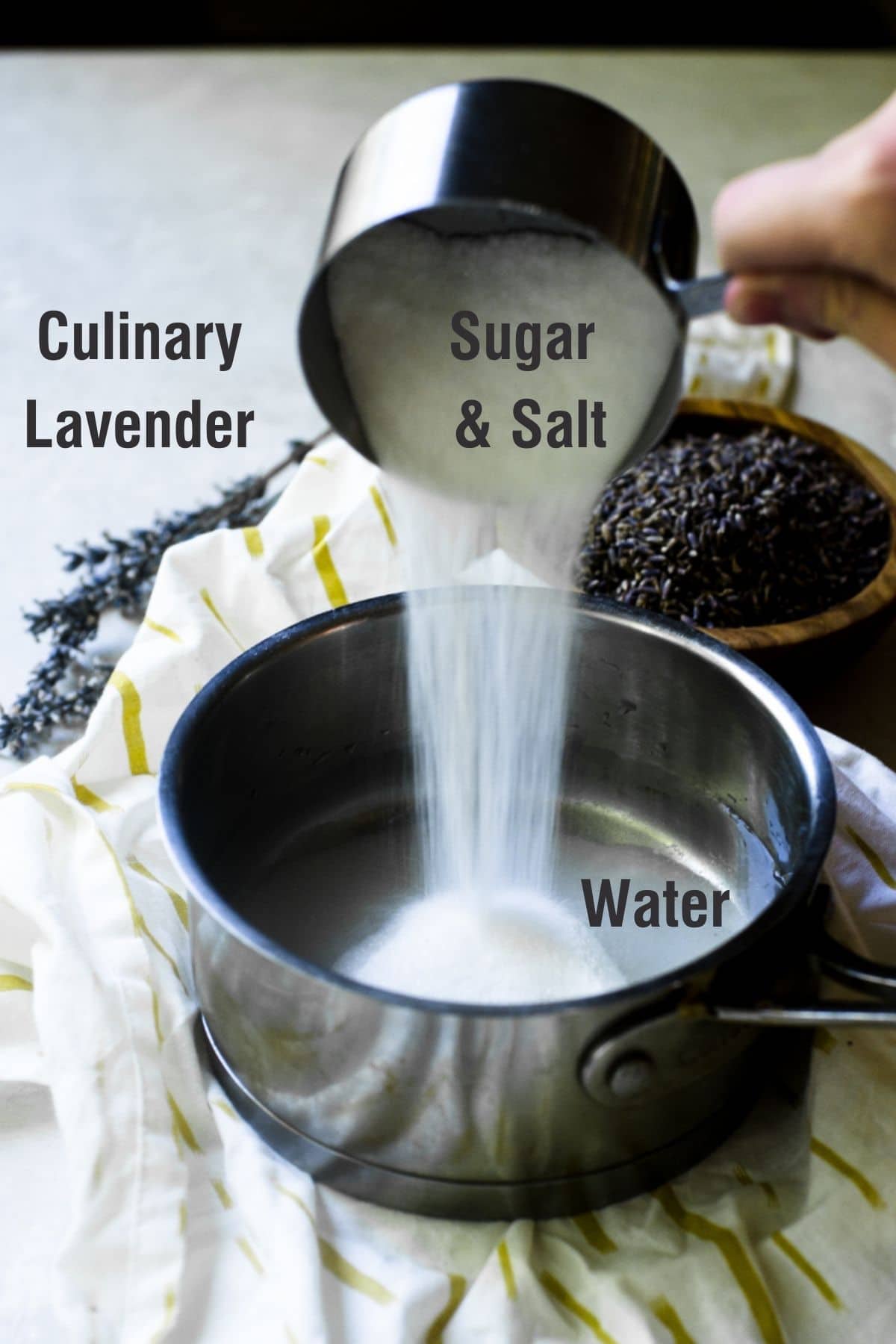
- Lavender Flowers. This may not be a question you even knew to ask, but not all lavender is the same. When it comes to making lavender simple syrup, it is best to get culinary lavender. These varieties are usually treated with fewer chemicals and taste better when cooked.
- Sugar. White granulated sugar is the most common, but you can substitute other sugars based on your preferences. For a more rustic, deeper flavor try sugar in the raw. Alternatively, you can also use a lavender honey simple syrup for a small change in flavor.
- Salt. This pinch of salt is missing from most recipes but makes ALL the difference. It helps tone the sweetness down, brings out the flavor of the lavender, and makes the lavender syrup even better for use in cocktails, lemonade, etc...
How To Make This Recipe
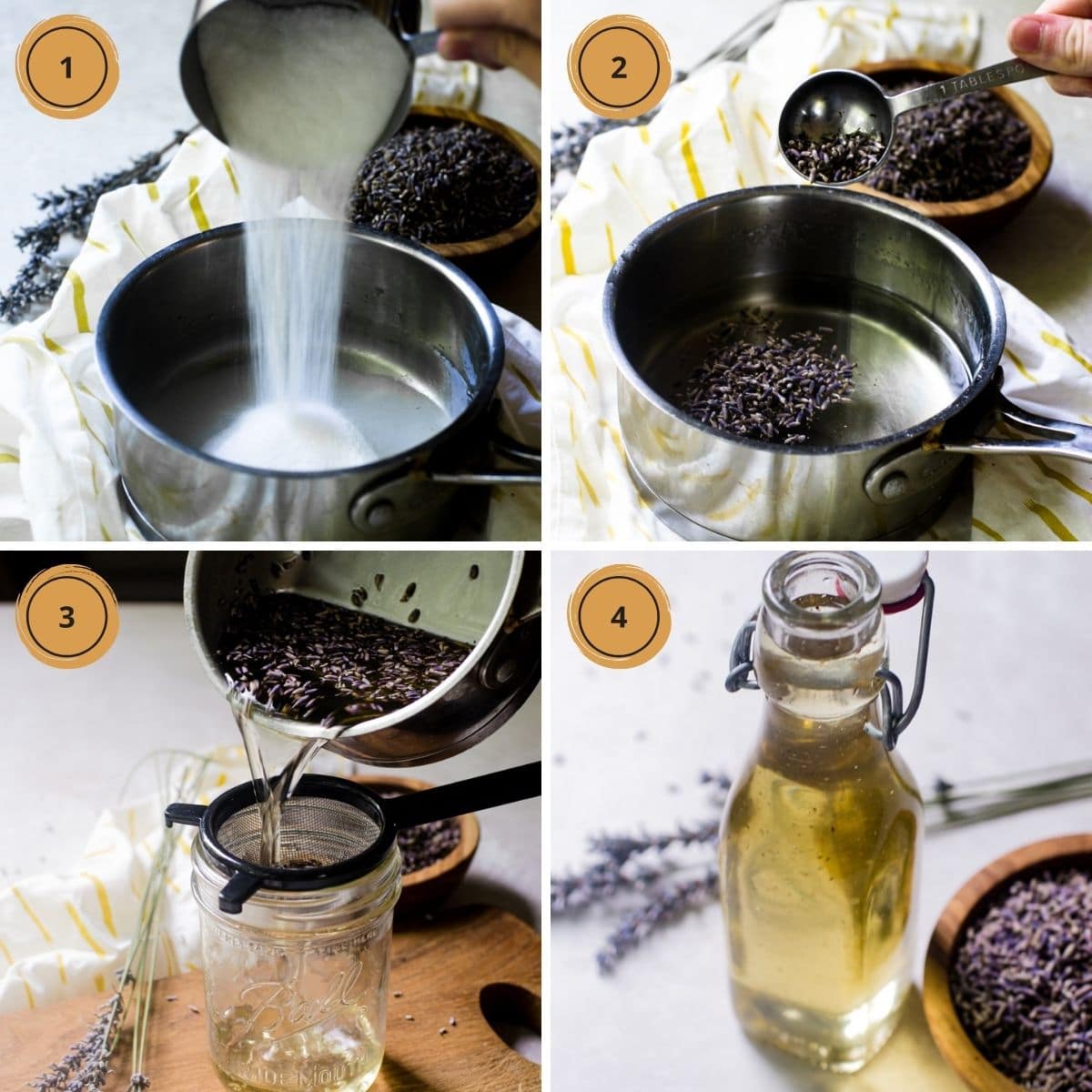
The process of making lavender simple syrup is just like standard simple syrup. All of the extra work is done at the end.
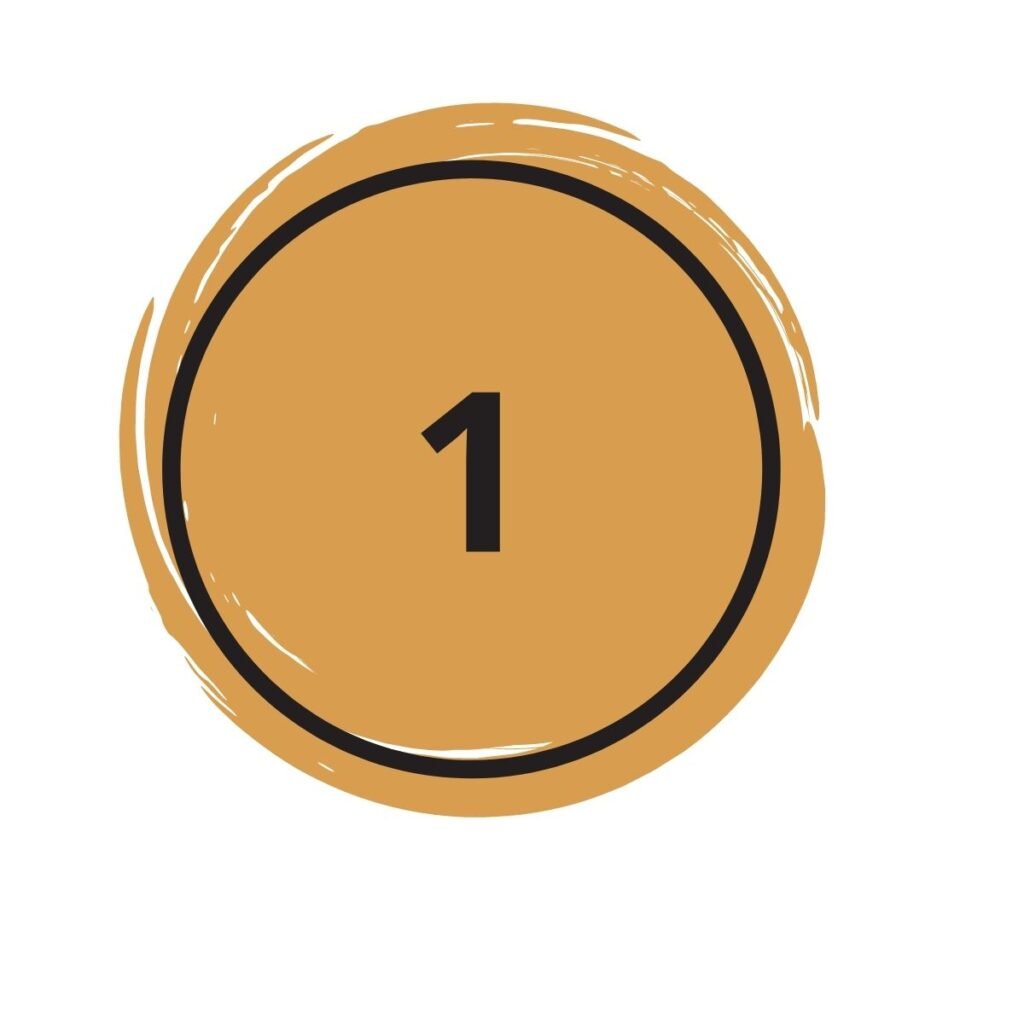
In a small saucepan pour the sugar into the water. This prevents the sugar from splashing onto the sides of the pan and crystallizing during cooking
(Trust me, that's a pain to clean up.)
Add in a pinch of salt. This helps balance the sweetness and brings out the lavender more.
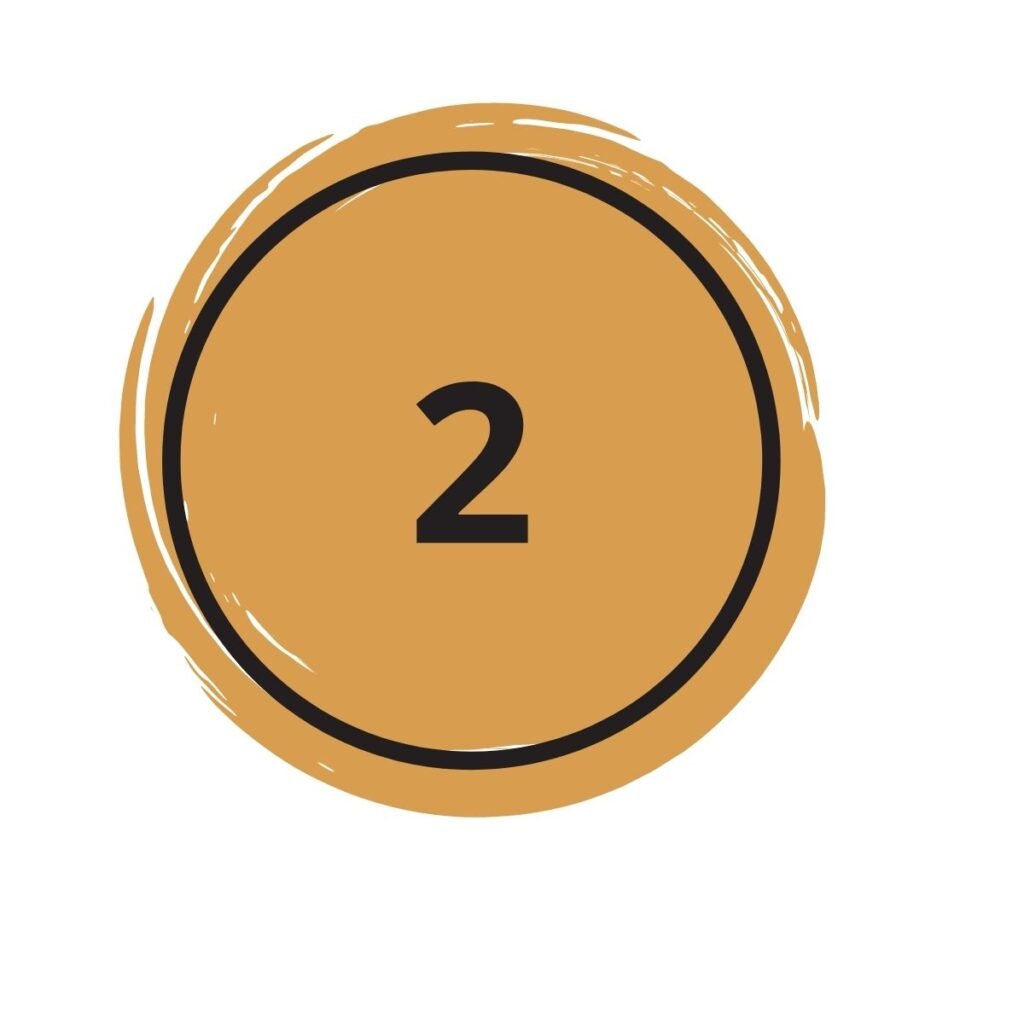
Over medium heat, bring the sugar mixture to a boil, stirring the sugar only as needed to prevent it from caramelizing. (See tips below.)
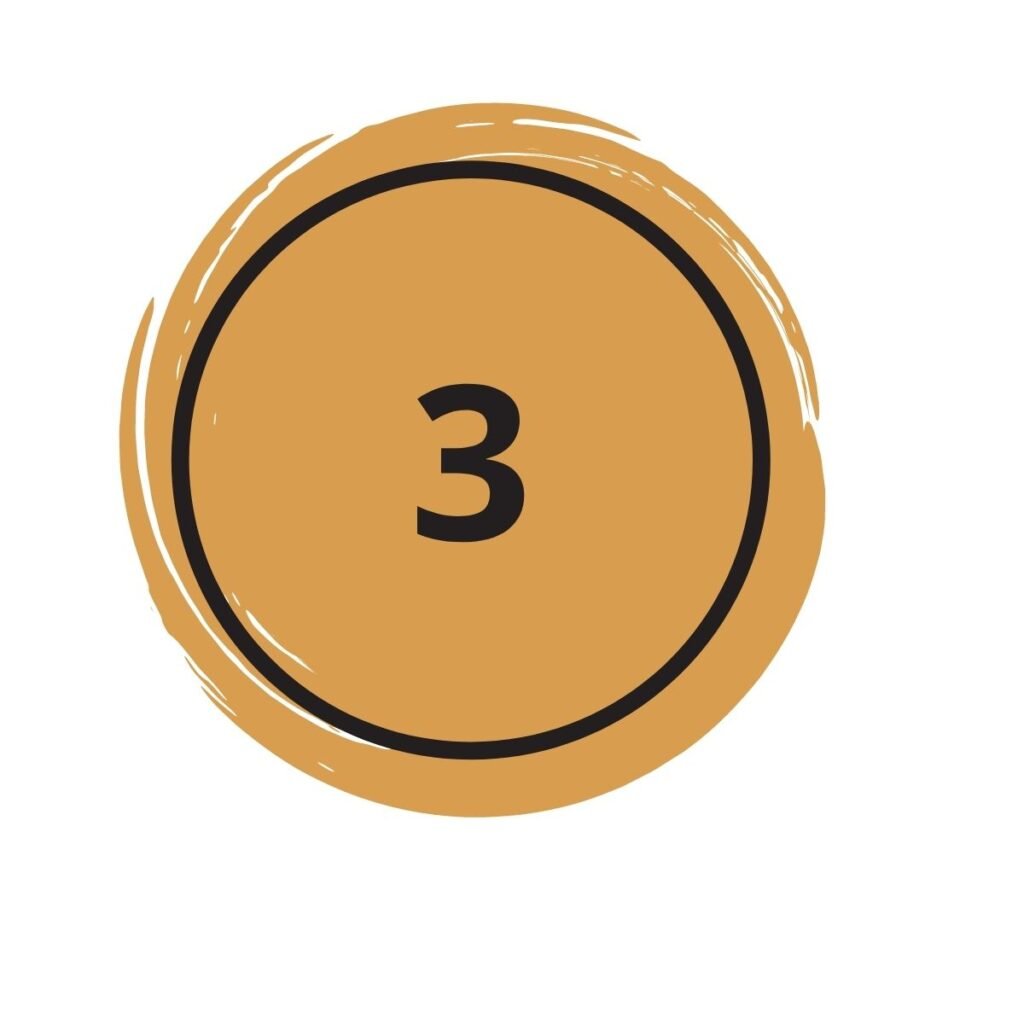
Once the sugar is dissolved remove the pot from the heat and stir in the lavender flowers.
Let the syrup steep.
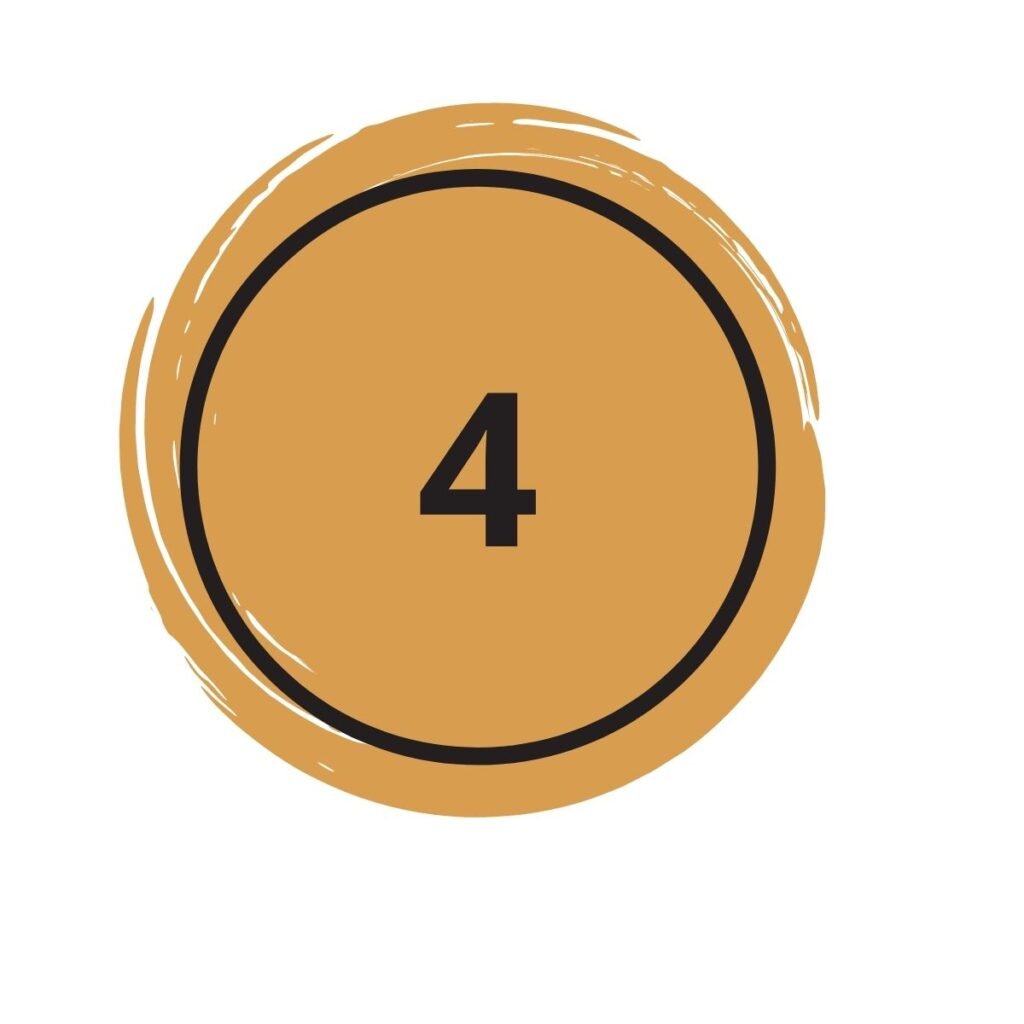
Using a fine-mesh strainer lined with cheesecloth, strain the syrup into an airtight container.
Seal the container and refrigerate.
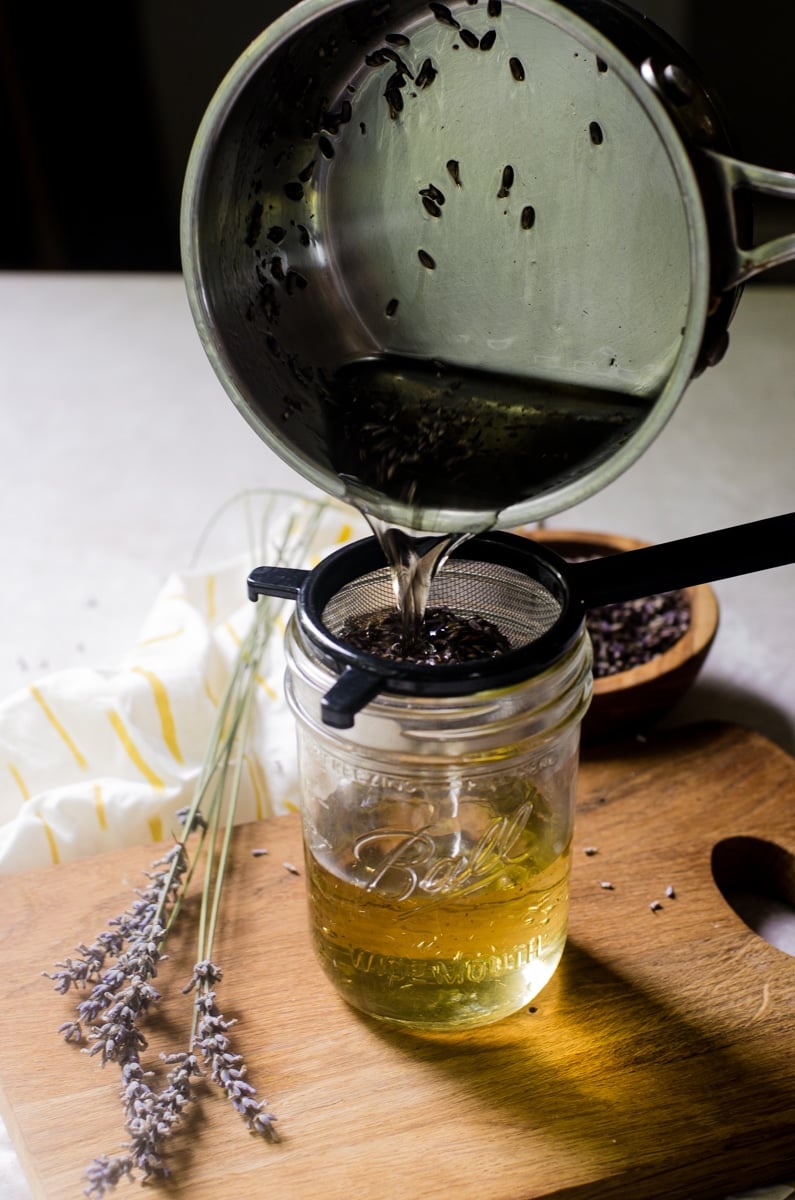
Expert Tips
- If you are buying a tied-together bunch of dried lavender on the stem, you may find it under names like "lavender swag", "lavender inosculation", or "lavender bunch". Just make sure it is a culinary lavender.
- When making lavender syrup, the buds themselves should never be boiled. The simple syrup is supposed to have a hint of lavender. Not lavender with a hint of sugar. The most common mistake is that the water, sugar, and lavender are all added together at the beginning. This results in over boiling the flowers which makes the syrup bitter.
- If you choose fresh lavender, you can use the leaves and flowers. These both give excellent flavor and aroma to the syrup. You will need to triple the amount of lavender added to the syrup to keep the flavor balance correct since fresh flowers aren't as strong as dried.
- Correctly made dried lavender doesn't actually let out a natural purple color, the syrup turns more of a slightly yellow tinge. If you want it to be purple like some of the storebought brands, you need to use either use a food dye, or a blend of fruit and vegetable powders.
- If you don't use cheesecloth, you'll get small floaters in the lavender syrup. This doesn't impact the texture, just the appearance.
- As you stir the sugar mixture in the pot, be careful not to splash any on the sides. As the temperature rises and the sugar cooks, it crystallizes the sugar to the pan making it really hard to remove. Use a wet pastry brush to help rinse any off the sides if you notice it happen.
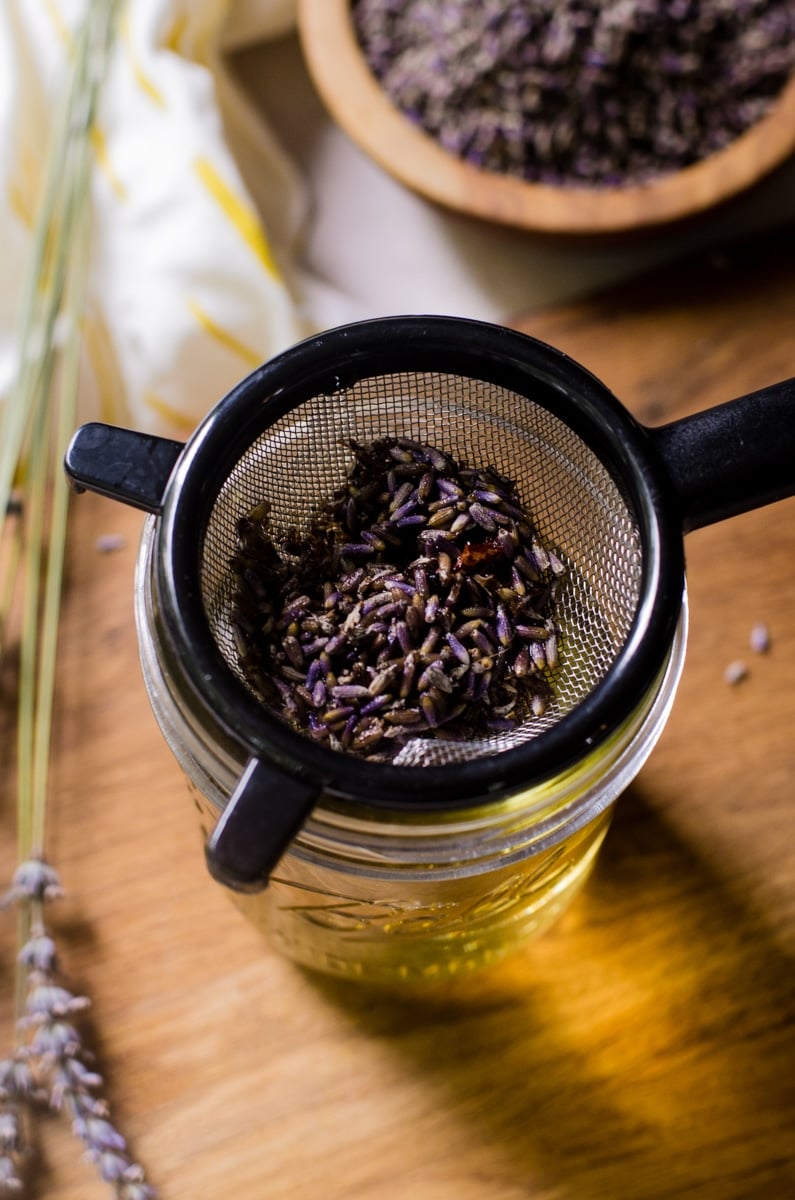
FAQ's
Lavender syrup will stay fresh for 1-2 weeks if refrigerated in an air-tight container. Despite the sugar being a preserver, the remnants of the lavender can cause mold, so look for a white film over the top of the syrup or a cloudy appearance before use.
Almost all lavender is edible, but not all lavender tastes good. Lavender from the angustifolias family is true lavender and has good flavor for cooking, but the intermedia family creates bitter and overly pungent buds. Any lavender labeled "culinary" comes from the angustifolias family.
Use the lavender simple syrup to sweeten drinks like coffee (lavender latte), cocktails (lavender martini), lemonade, or tea. It also works well to moisten cakes and provide a little extra flavor. No matter how you choose to use it, it will become a new favorite staple in your kitchen.
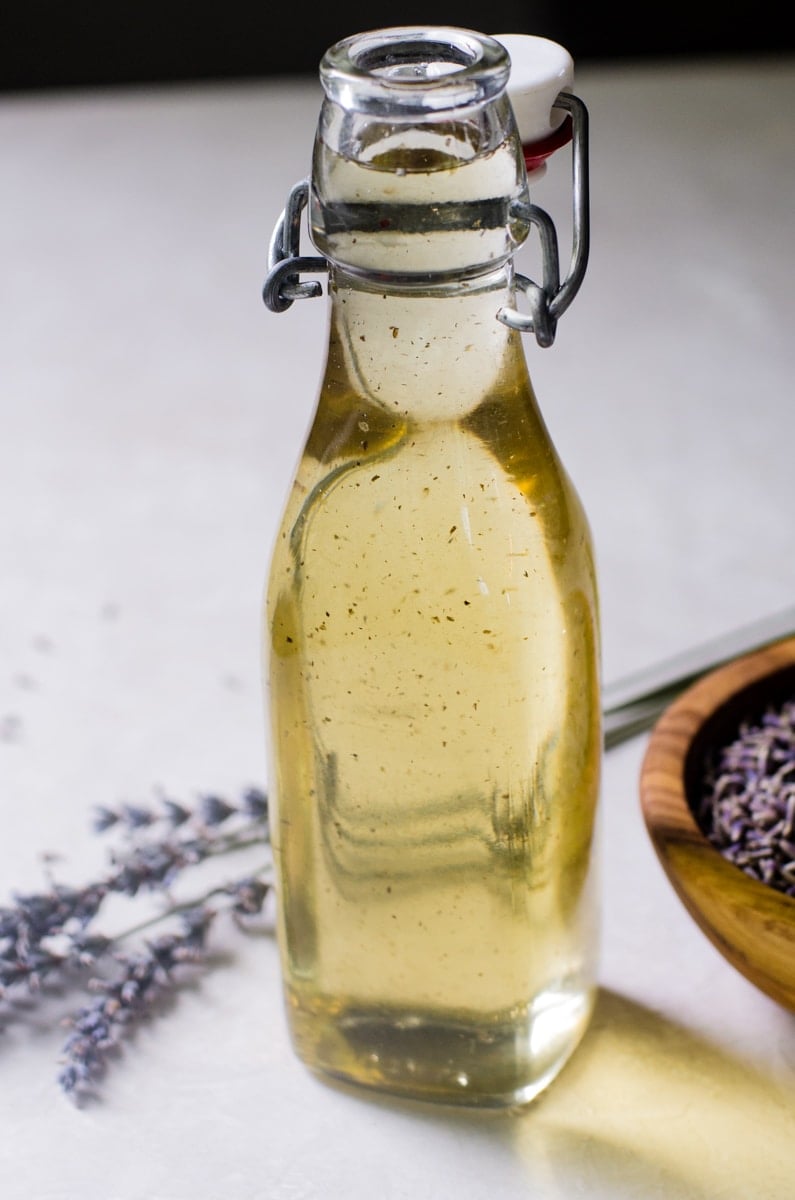
Related Recipes
If you love this lavender, I recommend trying some of these other recipes. (Some of which use this lavender syrup!).

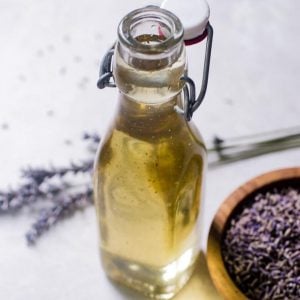
Lavender Syrup
Ingredients
- 1 cup water
- 1 cup granulated sugar
- pinch salt
- 2 Tablespoons dried lavender
Instructions
- In a small saucepan over medium heat, combine the water, granulated sugar, and pinch of salt. Bring to a boil then remove from the heat. Stir in the lavender and let steep for 30 minutes.
- Using a fine mesh strainer lined with cheesecloth* strain out the dried lavender and pour the simple syrup into a glass jar. Seal the jar and refrigerate for up to two weeks.
Notes
- If you are buying a tied-together bunch of dried lavender on the stem, you may find it under names like "lavender swag", "lavender inosculation", or "lavender bunch". Just make sure it is a culinary lavender.
- When making lavender syrup, the buds themselves should never be boiled. The simple syrup is supposed to have a hint of lavender. Not lavender with a hint of sugar. The most common mistake is that the water, sugar, and lavender are all added together at the beginning. This results in over boiling the flowers which makes the syrup bitter.
- If you choose fresh lavender, you can use the leaves and flowers. These both give excellent flavor and aroma to the syrup. You will need to triple the amount of lavender added to the syrup to keep the flavor balance correct since fresh flowers aren't as strong as dried.
- Dried lavender doesn't actually let out a natural purple color, the syrup turns more of a slightly yellow tinge. If you want it to be purple like some of the storebought brands, you need to use either use a food dye, or a blend of fruit and vegetable powders.
- If you don't use cheesecloth, you'll get small floaters in the lavender syrup. This doesn't impact the texture, just the appearance.
- As you stir the sugar mixture in the pot, be careful not to splash any on the sides. As the temperature rises and the sugar cooks, it crystallizes the sugar to the pan making it really hard to remove. Use a wet pastry brush to help rinse any off the sides if you notice it happen.



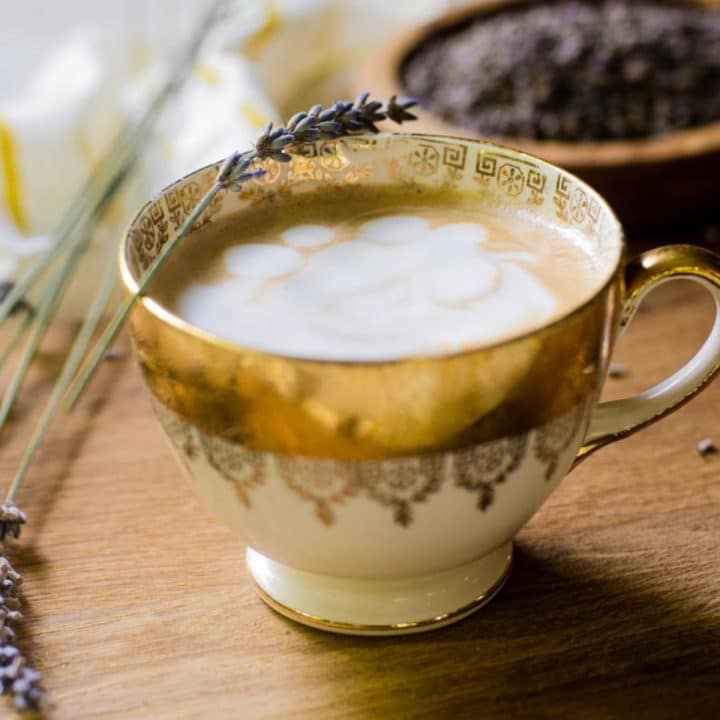
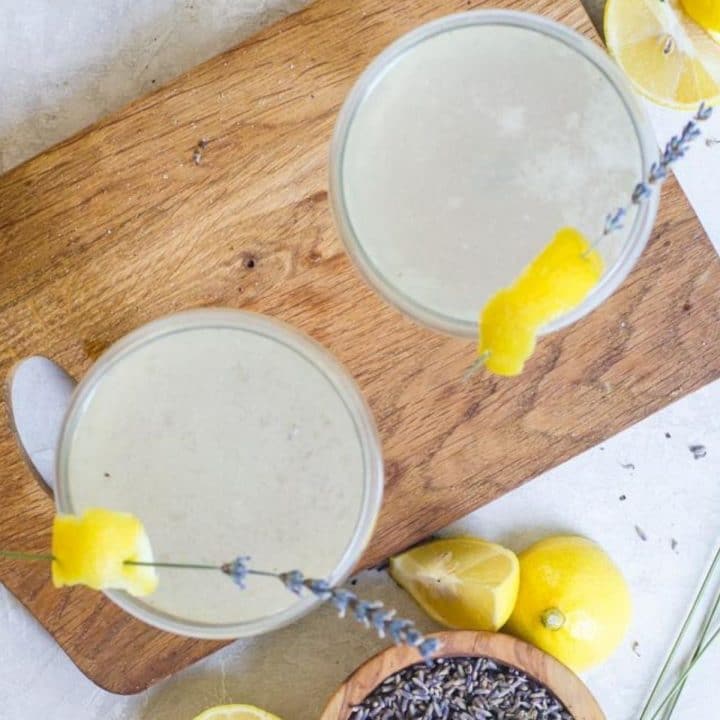

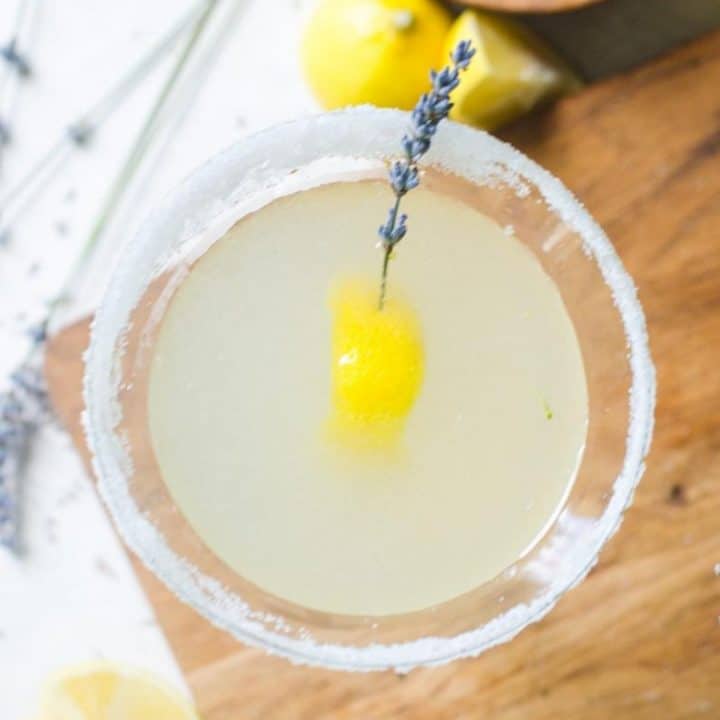
Evelyn says
Thank you!! This recipe is so gorgeous and so helpful!!!!
Mackenzie Ryan says
I'm so glad you loved it Evelyn! xoxo
Phil says
Love this with sleepy time tea. The aroma & flavor is really enhanced.
Mackenzie Ryan says
Ooh, I love that Phil! I'm going to make another batch just to do this!
Bobby Hagebusch says
I am looking for a recipe/ratio. This should be at the top. Without scrolling I should easily be able to see it. All other information should come next. This makes internet recipe hunting time consuming and stupid. Don't assume everyone is completely clueless.
Mackenzie Ryan says
Hello Bobby. This is why I have a "jump to recipe" button before any of the content. Please take a moment and notice what I have provided for you before assuming that I don't know how to do my job and leave frustrated comments for me for providing a completely free-to-you service is in no way earned by you but has taken plenty of my time, energy, and finances to develop. You're welcome.
Chelsea says
Not everyone is completely clueless, but you definitely are. Use the "Jump to Recipe" button next time bro
Mackenzie Ryan says
👏👏👏
Cheryl Schlotterer says
I want to use fresh lavender. What would my measurement be vs dried?
Mackenzie Ryan says
Hi Cheryl! When using fresh lavender, use three times the amount of dried. (Six Tablespoons) It will seem like a lot going in, but the flavor of fresh is not as strong as dried. I hope you love it!